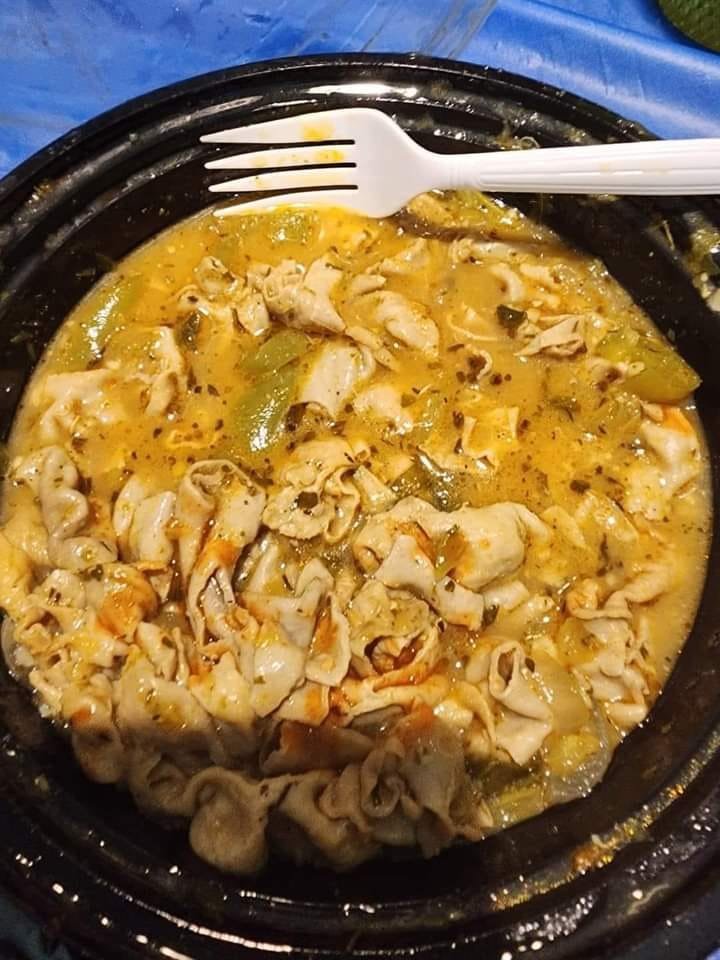
I’m going to be honest with you—cooking chitterlings, or “chitlins” as they’re affectionately known, isn’t something I grew up doing. But it’s a recipe that holds a special place in the hearts and homes of many, a true cornerstone of Southern and soul food traditions. My first experience with them was at a family gathering, and the rich, savory aroma and the comforting taste told me everything I needed to know about their importance. It’s a dish that takes time and care, but the result is a deeply flavorful, tender meal that feels like a warm embrace.
This recipe is all about respect for tradition and the simple, honest flavors that make it so special. It’s about taking a humble ingredient and transforming it into something truly memorable. Whether you’re a seasoned pro or trying this for the first time, I’m here to guide you through it.
Why I Love This Recipe
This isn’t just a recipe; it’s a piece of history on a plate. The process of making country chitlins is a labor of love, and there’s a certain satisfaction that comes from creating something so authentic and delicious from scratch. The combination of simple seasonings like onion, garlic, and red pepper flakes with the richness of the chitterlings creates a unique, soulful flavor that you just can’t get from a jar or a can. The long, slow simmer not only makes them incredibly tender but also fills your home with an aroma that’s pure comfort. This recipe is a nod to the past and a way to keep a cherished culinary tradition alive.
Ingredients
- 10 pounds frozen chitterlings, thawed and cleaned
- 1 large onion, roughly chopped
- 3 teaspoons salt
- 1 teaspoon black pepper
- 1 teaspoon minced garlic
- 1 teaspoon crushed red pepper flakes
- 2 tablespoons lard
- Vinegar, to taste
- 1 whole potato (optional, for smell)
- Optional additions: green pepper, hot sauce
Swaps and Notes
- Chitterlings: The most crucial step is the cleaning. Don’t rush this part. Fresh or frozen, they need to be meticulously cleaned to ensure the best flavor. Look for pre-cleaned options at your local butcher or grocery store to save time, but always give them a quick check yourself.
- Seasonings: The beauty of this dish is its simplicity, but you can always adjust the seasonings to your liking. Feel free to add more garlic or red pepper flakes for an extra kick. A dash of your favorite hot sauce is also a great way to personalize the flavor.
- The Potato: Adding a potato to the pot is an old Southern trick. While the exact science is debated, many people swear it helps absorb some of the cooking odors. It’s entirely optional, but if you’re concerned about the smell, it’s a simple trick worth trying.
- Lard: While you can use vegetable shortening, lard is the traditional choice and adds a distinct, rich flavor that can’t be replicated.
How to Make Country Chitlins
- Preparation is Key: Before you start cooking, you must clean the chitterlings thoroughly. This is the most important step. Thaw them completely. Place them in a large bowl or sink full of cold water. One by one, examine each chitterling, removing any foreign materials and excess membrane. You want to leave some of the fat on for flavor, so be careful not to strip it all away. After they’re all cleaned, soak them in two to three cold water baths, changing the water each time until it runs clear.
- Safety First: After handling the raw chitterlings, it’s critical to clean your surfaces with a bleach-based sanitizer and wash your hands with soap and water to prevent any cross-contamination.
- Start Cooking: Place the cleaned chitterlings in a large 6-quart pot. Cover them completely with cold water. Add the chopped onion, salt, black pepper, minced garlic, crushed red pepper flakes, and the lard. If you’re using a potato for smell, toss that in now, too.
- Bring to a Boil: Bring the pot to a rolling boil over high heat. Once it’s boiling, reduce the heat to a simmer, just enough to keep the water bubbling gently.
- Simmer for Tenderness: Cover the pot and let the chitlins simmer for 4 to 5 hours. The long, slow cooking process is what makes them tender. They are ready when they turn a clear to white color and are soft and fork-tender.
- Finishing Touches: Once they’re cooked to your liking, turn off the heat. Stir in some vinegar to taste. This brightens the flavor and adds a tangy kick that complements the richness of the meat. You can also add some hot sauce and green peppers at this stage if you like.
Tips for Success
- Patience is a Virtue: Don’t rush the simmering process. The 4-5 hour cook time is essential for achieving the melt-in-your-mouth tenderness that defines great chitlins.
- Cleanliness is Non-Negotiable: I can’t stress the cleaning step enough. Taking the time to do this correctly will make all the difference in the final taste and texture of your dish.
- Don’t Over-Season at the Start: Start with the recommended amount of seasoning, but feel free to adjust as they cook. Taste the broth about halfway through and again at the end, adding more salt, pepper, or heat as needed.
Serving Suggestions and Pairings
Chitlins are often served as part of a larger Southern feast. They pair beautifully with other classic soul food dishes. I love them with a side of creamy macaroni and cheese, collard greens, or cornbread. For a full-on comfort meal, try serving them alongside my favorite quick dinner packed with southern flavor, this Tomato Skillet with Okra and Sausage or my favorite bowl of southern comfort, Cajun Chicken Sausage Gumbo.
Storage and Leftover Tips
Leftover chitlins can be stored in an airtight container in the refrigerator for up to 3-4 days. To reheat, you can gently warm them on the stovetop or in the microwave. They also freeze well. Simply place them in a freezer-safe container or bag, and they’ll keep for up to 3 months. Thaw them in the fridge overnight before reheating.
More Recipes You Will Love
If you’re craving more comforting, home-style meals, be sure to check out some of my other favorites.
- For another easy and delicious chicken dinner, you can’t go wrong with these Easy Cheesy Chicken Sliders with Marinara Garlic Butter.
- If you’re in the mood for a classic, my Classic Spaghetti Recipe with Homemade Sauce is always a hit.
- And for a lazy Sunday, these Easy Turkey Wings are a must-try.
Final Thoughts
Cooking country chitlins is more than just following a recipe; it’s about celebrating a rich culinary heritage and sharing a dish that has brought comfort to generations. The process is a bit of a journey, but the final reward—a tender, flavorful, and deeply satisfying meal—is well worth the effort.
If you make this recipe, I’d love to hear how it turns out for you. Let me know your favorite part of the process or any family traditions you have around this dish in the comments below. Happy cooking!




Leave a Reply